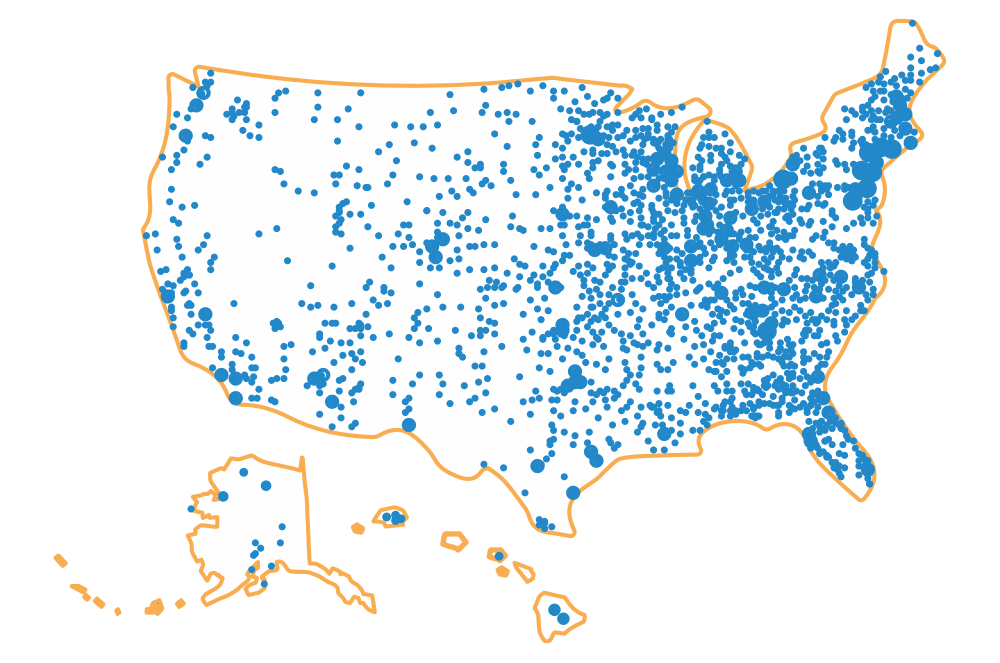Held Oct. 21-24, 2025, National Transfer Student Week, focuses on the education journey for students who start at a community college, trade or vocational schools and then transfer to a university. It also refers to students who transfer between universities. Transferring college credits from one higher education institution to another can stretch your Ohio 529 college savings a lot further.
Community college is a great way for all types of students to transition into higher education. Whether you’re a high school student looking to stay local and save money, or you’re an adult student looking to get back into a degree track, starting at 2-year school can help families save more funds in their Ohio 529 Plan accounts as the community college costs are usually less expensive. Therefore, the number of college credits that a student can transfer from a lower-priced institution to a higher-priced one can significantly lower the costs of a higher education. Additionally, some community colleges are offering bachelor’s degrees, yet another way to keep your costs low as you can earn a four-year degree at the community college credit hour cost.
If you look at the national average price of a credit hour, community college ones costs $150, while the average cost at a four-year public, in-state university is $406. If your child earns 10 credit hours at a community college on transferable core classes, the cost could be around $1,500. If your child took the same 10 credit hours of core classes at a four-year college or university, the average cost could be $4,060 or more. With this example, by taking the same required courses at a community college, you could still have $2,560 in your Ohio 529 account for future use by starting at a community college.
Just like saving for college, the key is to start the transfer planning process as early as possible. If your student plans to start their academic studies at a community college to then complete it at a four-year program, let the community college’s academic advisor know before enrolling there. The counselor can guide your student to the four-year programs with which they have transfer agreements, and which courses are guaranteed to transfer and be applied to their bachelor’s degree. After your student has taken the core requirement classes and is ready to start the transfer process to the four-year program, they need to connect with their next school’s transfer office for guidance.
Taking general education courses at a lower-priced community college is a smart way to save money in your Ohio 529 account and potentially have your student graduate early. Or even complete an associate degree – the Ohio Guaranteed Transfer Pathways ensure that certain associate degrees will transfer seamlessly into a related bachelor’s degree program. If interested, contact your child’s home school’s transfer office to find out where they have transfer agreements, and which courses are guaranteed to transfer and apply toward a specific degree(s).
State-level transfer pathways, administered by the Ohio Department of Higher Education, are geared for public colleges and universities and lay out how courses and chunks of degrees will transfer within the state’s educational system. Those programs include: Credit When It’s Due, Ohio Guaranteed Transfer Pathways, Ohio Transfer 36, Transfer Assurance Guides, Career-Technical Credit Transfer, Ohio Technical Center Degree Pathways, Industry Recognized Credential Transfer, Military Transfer Assurance Guides, and Prior Learning Experience.
Also, your student can earn college credits while in high school with College Credit Plus (CCP), Career-Technical Credit Transfer (CTAG), and Advanced Placement. There are even pathways to help guide students when selecting courses for CCP to make sure that they are taking the right courses for a specific major. These programs can help start your student’s college and career training before even leaving high school. And not having those post-secondary education classes to take will mean less costs to cover for their higher education.
Students can also earn transfer credits based on their previous life experiences. Prior Learning Assessments (PLA) aims to evaluate a student’s life learning outside of a traditional educational environment. College credits are earned two ways. The first is credit by exam, like tests created by the College Level Examination Process (CLEP). The second is through a portfolio that contains a student’s applicable education and prior learning. Members of the military and veterans can also turn their military experiences into credit. The American Council on Education (ACE) created college credit recommendations surrounding the Joint Services Transcript (JST), which is used by the Army, Marine Corps, Navy, and the Coast Guard. Ohio has taken its commitments to military and veterans’ education a step further. Military Transfer Assurance Guides are a set of state-specific transfer guidelines related to turning military experiences into credit at Ohio’s public colleges and universities. Another program, Industry Recognized Credential Transfer Assurances Guides (ITAGs), guarantees college credits for people who have earned industry-recognized credentials. These approved credentials will be eligible for college credits at public community college or university in Ohio.
Other resources can help a student make sure their college course work will transfer. National transfer databases that house transfer agreements, like Transferology, are a great place to see which courses transfer on a regional or national level. Students transferring within Ohio’s public institutions can use the Credit Transfer Tool to help envision how their credit and experiences will transfer and apply at different schools.
Transferring credits from a community college to a four-year program can reduce your college costs and stretch your 529 savings funds. If you and your student are deliberate with your actions, diligent in your research, the transfer process can work well for you and your college savings.
Visit Ohio 529 CollegeAdvantage online to start saving today for your child’s future education with as little as $25. A 529 account can be used for whatever school comes after high school—including four-year colleges and universities, community colleges, tech, trade or vocational schools, apprenticeships, and certificate programs. Learn, plan, and start with Ohio’s 529 Plan today at CollegeAdvantage.com.


















